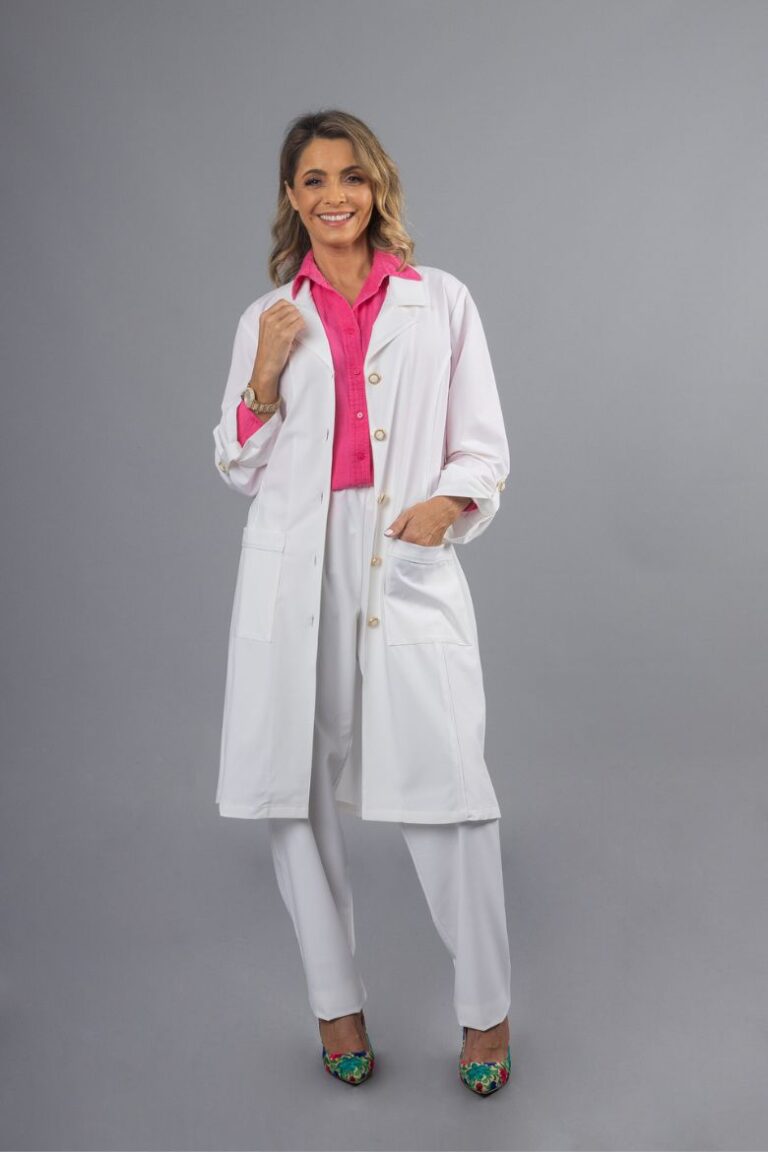



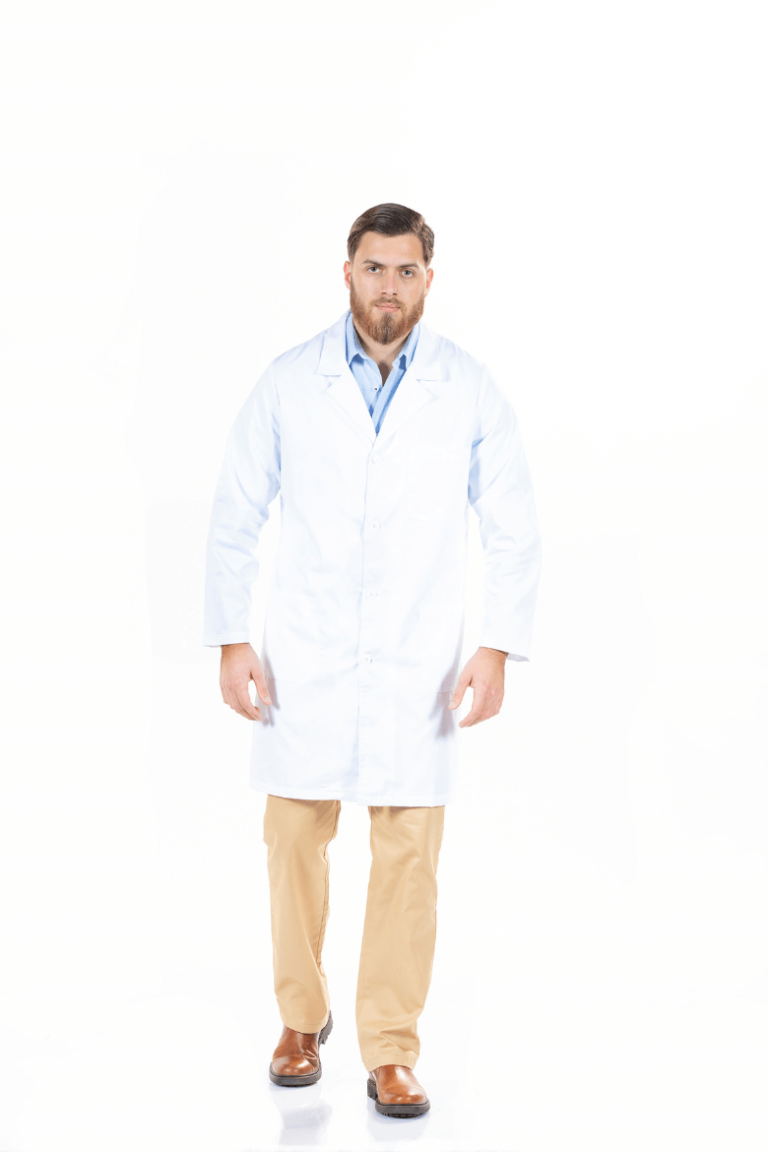

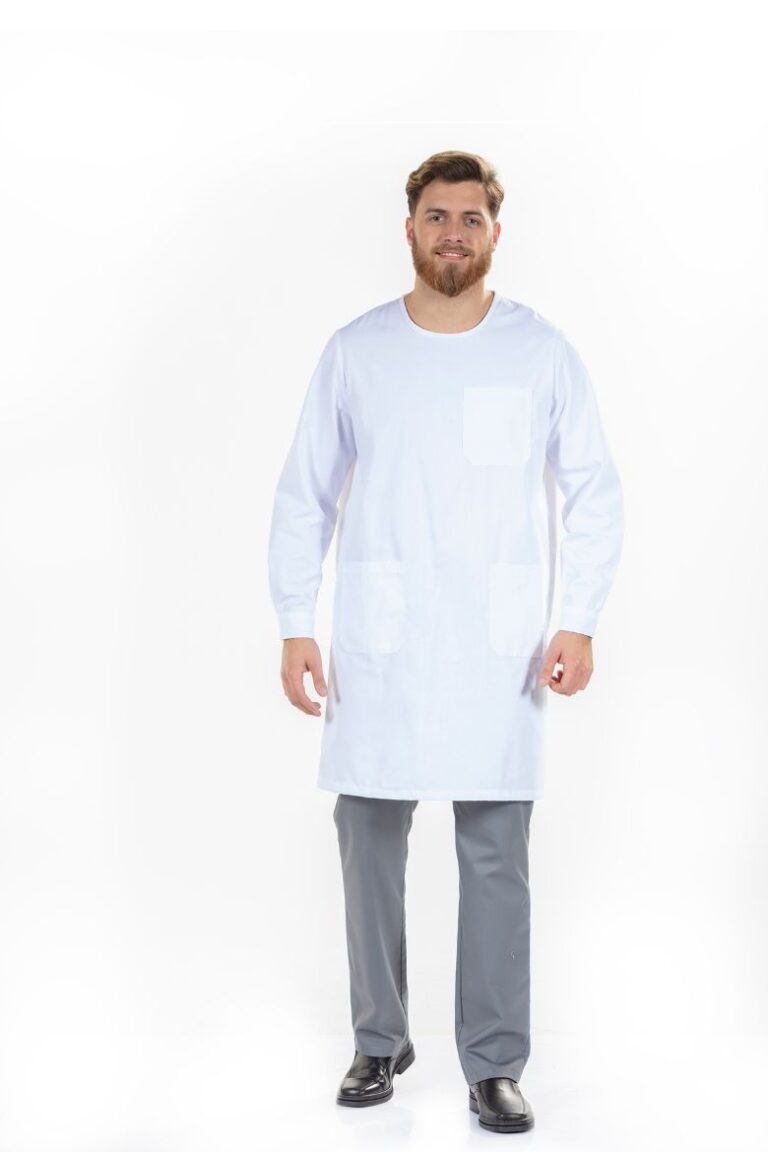
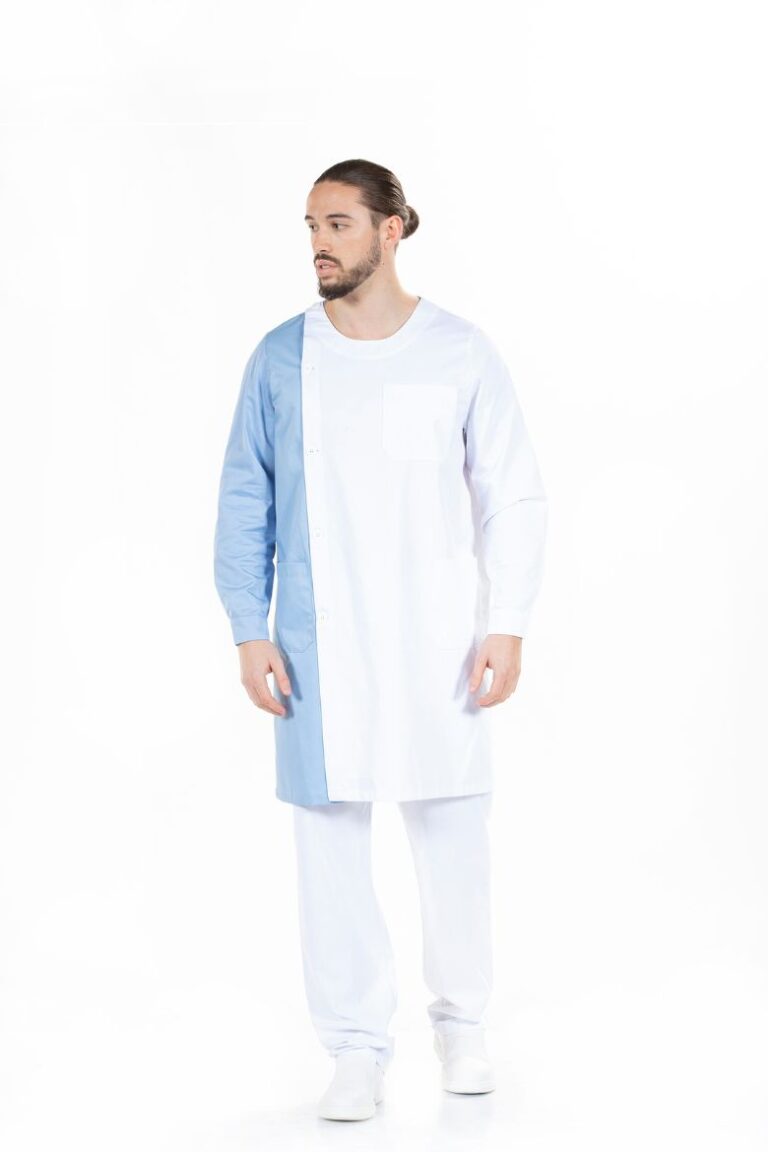
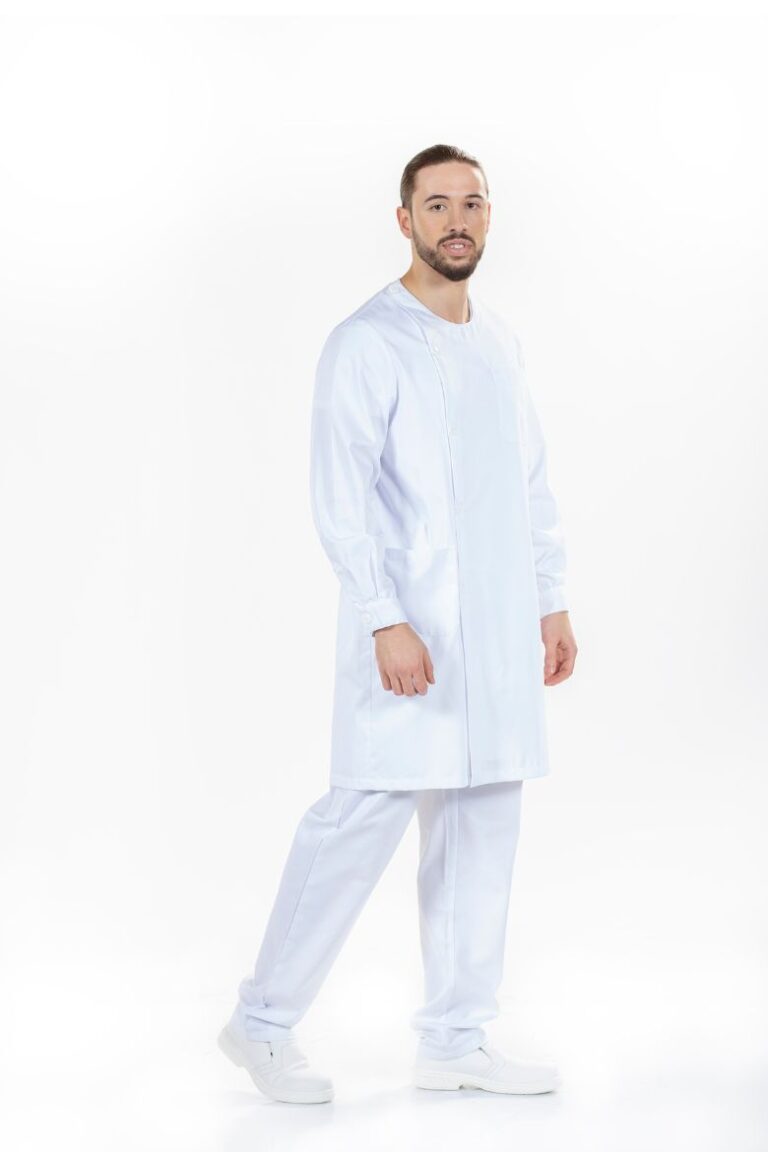
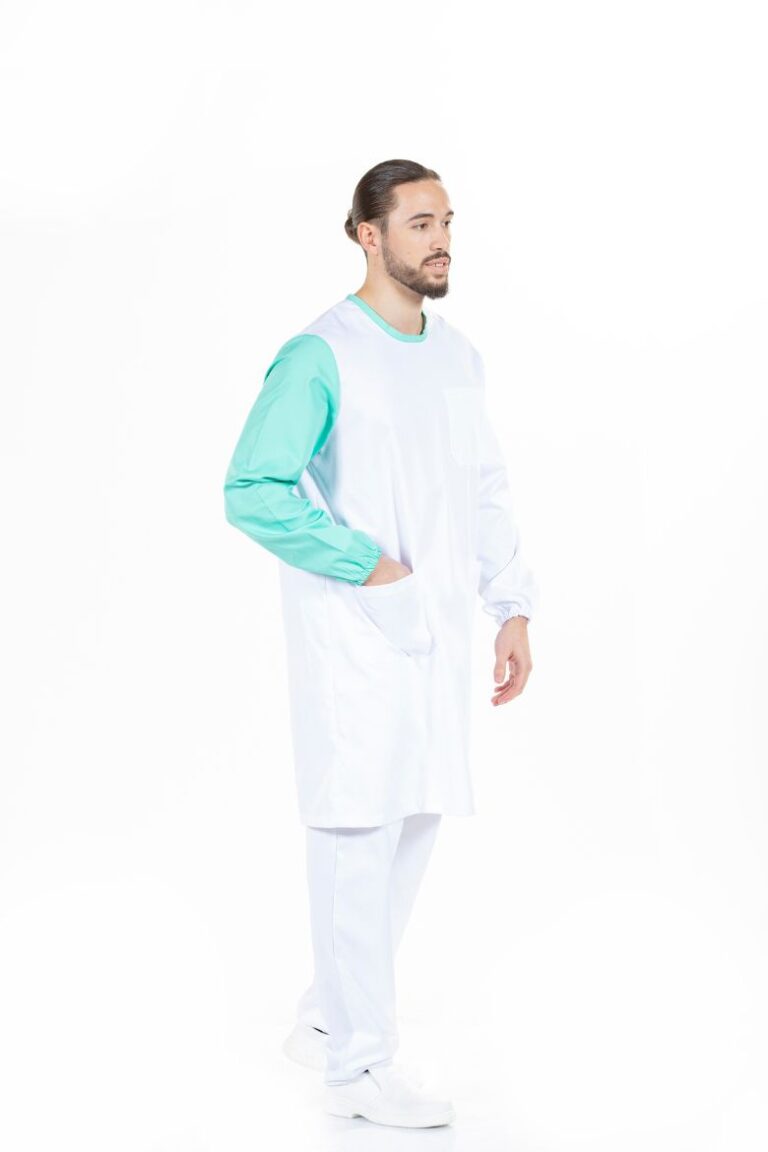
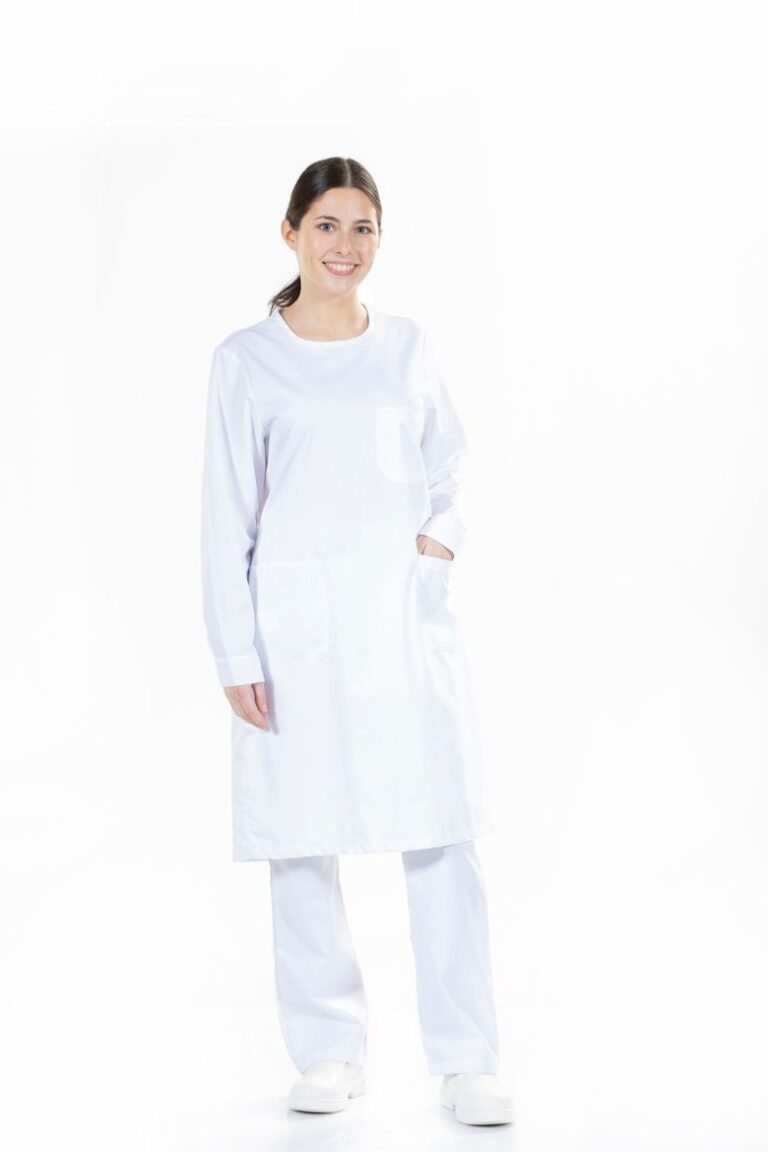
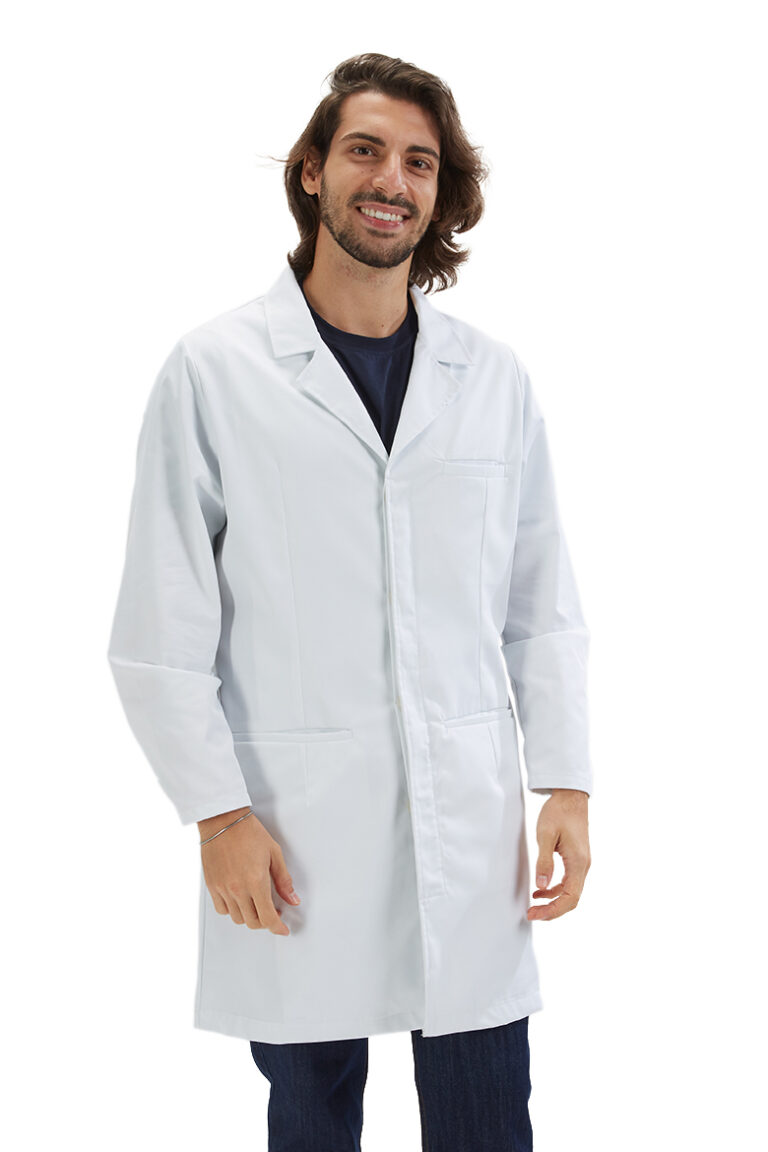
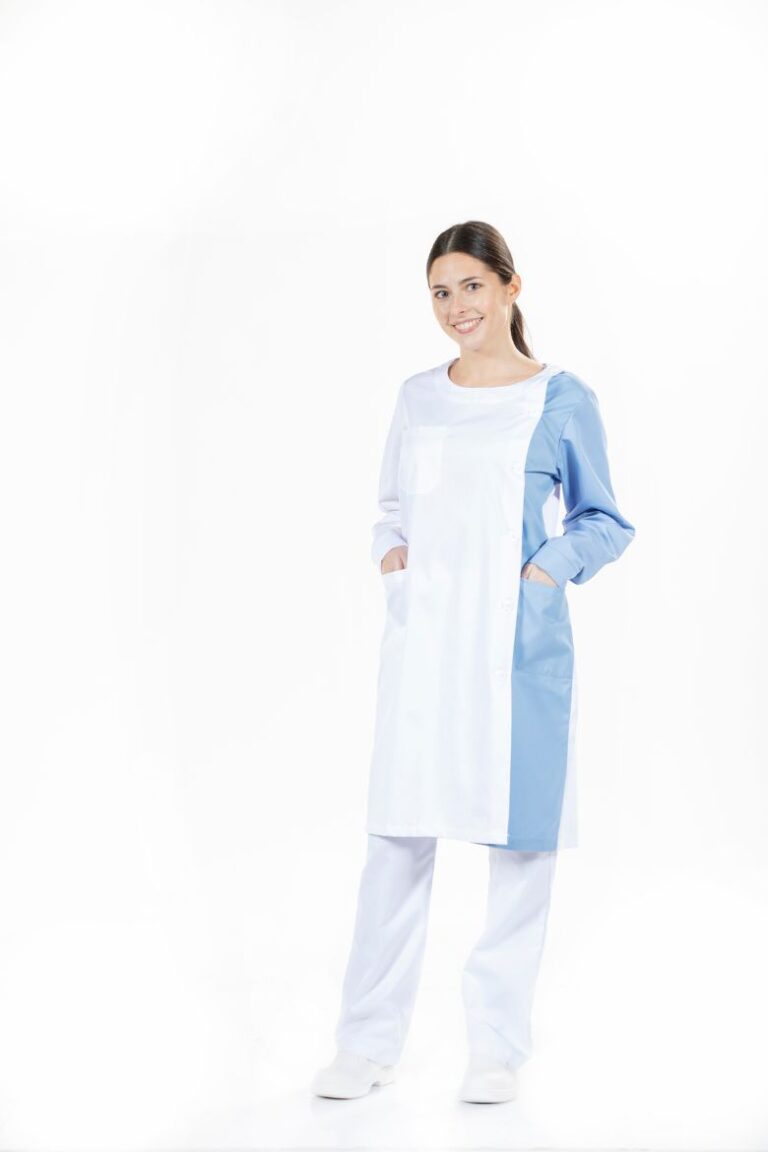
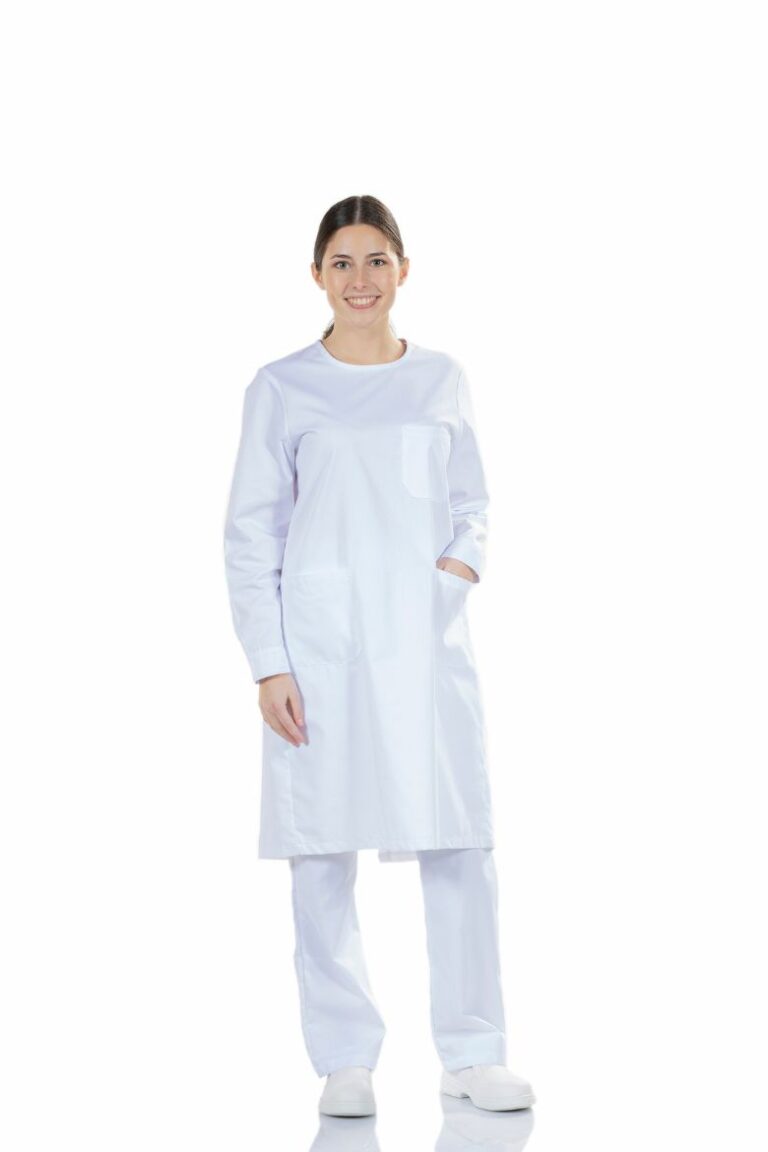
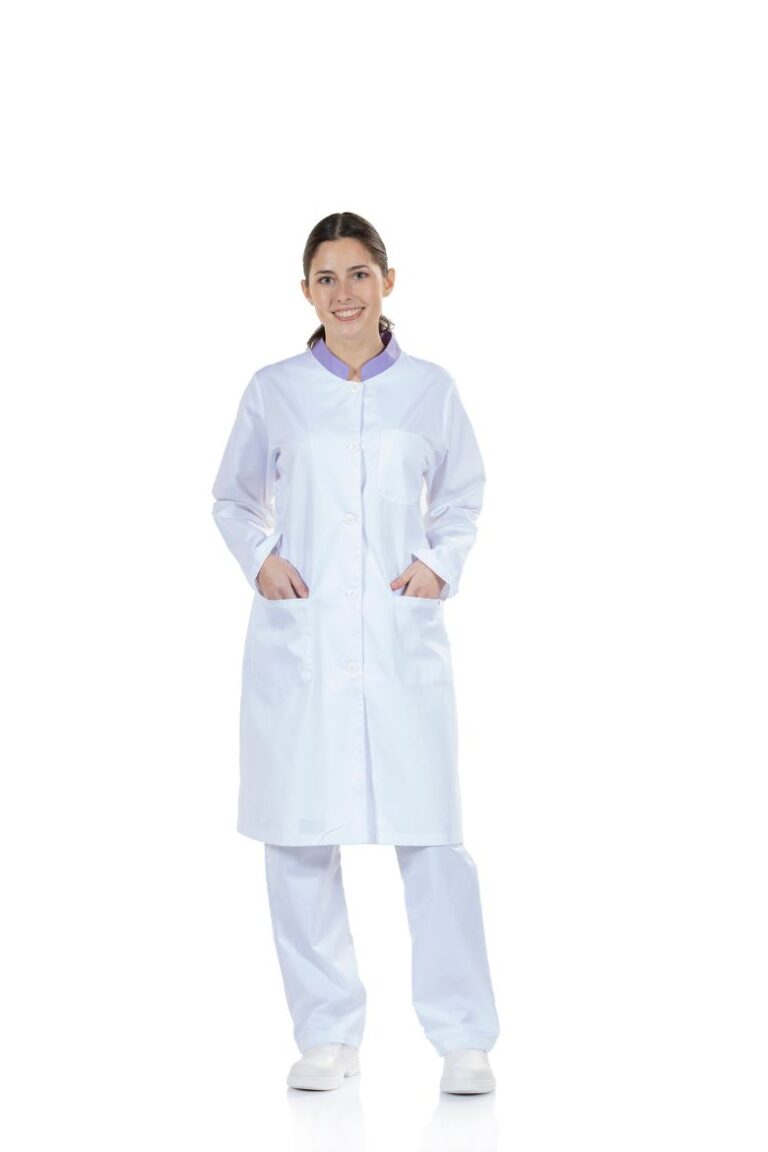
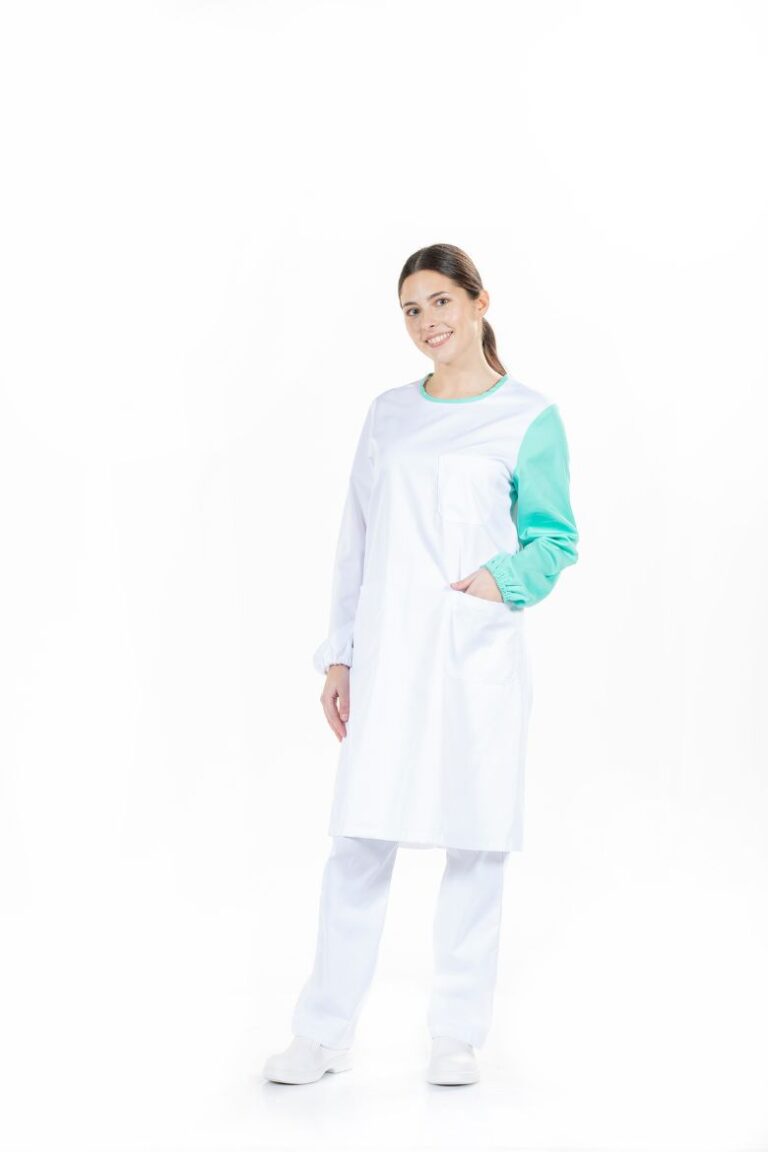
Products with visible prices are those that can be purchased immediately, online, without requiring minimum purchase quantities. This means you can explore our variety of options and purchase exactly what you need, with complete transparency regarding costs and the Professional Apparel model. On the other hand, products without a listed price function as a portfolio of possibilities. These items are highly customizable and can be tailored to each customer's individual specifications. To ensure quality and meet expectations, these products have a minimum order quantity and are subject to a custom quote process.
Hospital gowns are protective clothing worn by healthcare professionals in hospital and healthcare settings. They are designed to protect both the wearer and the patient from the spread of pathogens and other hazardous substances, while also maintaining a clean and hygienic hospital environment. Hospital gowns can be made from various materials, including synthetic fabrics like polyester or natural fabrics like cotton. They are designed to be easily washable and sterilizable, which is crucial for maintaining a clean and hygienic environment. There are several different types of hospital gowns available, including patient gowns, surgical gowns, laboratory gowns, and isolation gowns. Each type of gown is developed to meet a specific need depending on the environment in which it will be used. In summary, hospital gowns are essential garments in many healthcare settings. They are manufactured to protect healthcare professionals and patients from the spread of bacteria and other hazardous substances, while also maintaining a clean and hygienic environment.
Choosing the right hospital gown depends on the environment in which it will be used and the specific needs of the user. Here are some considerations to keep in mind when selecting a gown Choosing the right hospital gown for each situation: Type of Environment: The choice of hospital gown will depend on the type of environment in which it will be used. For example, in a surgical environment, a sterile surgical gown is the most appropriate choice. In an isolation environment, a fluid-resistant isolation gown may be required. Level of Protection: The level of protection needed will depend on the risk of contamination in the work environment. In environments with a higher risk of contamination, a gown with greater protection should be used. Material: Hospital gowns can be made from natural or synthetic fabrics. The material chosen will depend on the environment in which it will be used, the level of comfort, and the need for sterilization and cleaning. For example, a cotton gown is comfortable but may not be the best choice for an isolation environment, where a fluid-resistant gown would be more appropriate. Size and Fit: The gown should be selected according to the proper size and fit. A gown that is too large or too small can limit the user's mobility and increase the risk of contamination. Safety and Hygiene Regulations: It is important to choose a hospital gown that complies with safety and hygiene regulations. Regulations vary by country and region, so it is important to check local guidelines. Reuse: Some hospital gowns can be reused after proper sterilization, while others are disposable. The choice of the right gown will depend on the hospital or clinic’s policy regarding the reuse of personal protective equipment.
Hospital Gowns for Healthcare Professionals
Hospital gowns are essential professional uniforms in many healthcare settings. This workwear is used by healthcare professionals in hospitals, clinics, medical offices, and other places where hygiene is critical.
Hospital gowns are designed to provide protection against the spread of bacteria, viruses, and other pathogens. They are made from specialized materials that are fluid-resistant and can be washed and sterilized repeatedly. The gowns are also designed to be comfortable and practical, allowing healthcare professionals to perform their tasks efficiently.
The functions of hospital gowns vary depending on the area of use. Here are some of the main functions of gowns in different healthcare settings:
In addition to their specific functions, hospital gowns offer various benefits for patients, healthcare professionals, and visitors.
Here are some of the main advantages of hospital gowns:
Protection against pathogens: Hospital gowns are designed to offer protection against the spread of bacteria, viruses, and other pathogens. This is especially important in hospital environments.
Hygiene: Hospital gowns are designed to be easily washable and sterilizable, which helps maintain a clean and hygienic hospital environment.
Comfort: Hospital gowns are designed to be comfortable and allow healthcare professionals to perform their tasks efficiently and without restriction.
Identification: Hospital gowns are often in different colors or have logos that identify the department or function of the wearer. This helps to easily identify who is who in a busy hospital environment.
Safety: Hospital gowns can help maintain patient safety. For example, patient gowns often have openings in the back, which prevents patients from trying to remove their own clothing, which could be dangerous in some cases.
Cost-effectiveness: Hospital gowns are made from materials that can be washed and sterilized repeatedly, meaning they can be reused multiple times before needing replacement. This helps save money compared to using disposable clothing.
Hospital gowns are used in a wide variety of healthcare areas, including hospitals, clinics, medical offices, research laboratories, and clinical labs. Here are some key areas where hospital gowns are used: Surgery: Surgical gowns are used during surgeries to protect the patient and healthcare professionals from the spread of pathogens during the procedure. Emergency: Hospital gowns are used in emergency settings to protect healthcare professionals from pathogens and other hazardous substances. Intensive care: Hospital gowns are frequently used in intensive care units to protect critically ill patients from pathogens and other dangerous substances. Laboratories: Hospital gowns are used in research and clinical laboratories to protect healthcare professionals from pathogens and hazardous chemicals. Dentistry: Hospital gowns are commonly used in dental offices to protect healthcare professionals from pathogens and bodily fluids.
In summary, hospital gowns are an essential item in many healthcare settings. They offer protection against the spread of pathogens, help maintain a clean and hygienic hospital environment, are comfortable and practical, and can be reused multiple times before needing replacement. Hospital gowns are used in a wide variety of healthcare areas, including surgery, emergency, intensive care, laboratories, and dentistry.
Fardamento à sua medida.
Descubra as nossas
soluções.
Fardamento à sua medida.
Descubra as nossas
soluções.
To subscribe, please enter your e-mail address and click on “Subscribe”.
You can stop receiving our communications by clicking on the link in the footer of any of our newsletters.
Para efetuar a sua subscrição, por favor insira o seu e-mail e clique em “Subscrever”.
Poderá parar de receber as nossas comunicações, ao clicar no link para o efeito encontrado nos rodapés de qualquer uma das nossas Newsletters.
UNIFARDAS® supports Espaço T, which is an inclusive organisation, of all and for all, and our common goal is to increase employment opportunities for young people with special needs and/or who, for some reason, have been excluded from the labour market.
We work hard to provide safe working conditions by going beyond the imposed and mandatory minimums.
We support, nurture and offer continuous training programmes aimed at improving skills.
At UNIFARDAS® we keep up to date with the latest technologies and innovations that can optimise our production process making it more efficient and close to zero waste.
UNIFARDAS® is a partner of Espaço T, an inclusive organisation, of all and for all, with the common goal of increasing employment opportunities for young people with special needs and/or who, for some reason, have been excluded from the labour market. In this organisation, immigrants will also find a support network in finding work and housing.
In addition to the sustainable path we have been taking throughout our production and supply chain, UNIFARDAS® participates, supports and organises a beach clean-up every year after the bathing season, in partnership with World Clean-up Day. We are also partners of Seaqual, an entity that, together with some other partners, promotes the collection of ocean waste and its transformation into upcycled marine plastic that will then be used in the production of fabric and other sustainable products.
In addition to the sustainable path we have been taking throughout our production and supply chain, UNIFARDAS® participates, supports and organises a beach clean-up every year after the bathing season, in partnership with World Clean-up Day. We are also partners of Seaqual, an entity that, together with some other partners, promotes the collection of ocean waste and its transformation into upcycled marine plastic that will then be used in the production of fabric and other sustainable products.